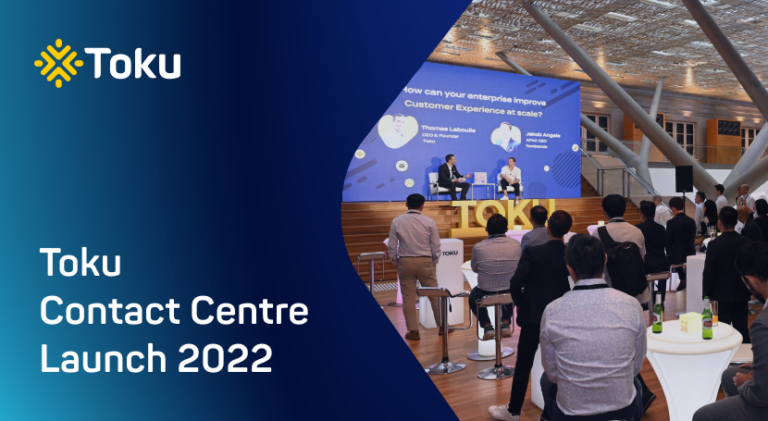Learn more about Communications APIs, how they work, how they can boost customer experience and provide cost savings.
In today’s fast-paced world, customers demand seamless and effortless experiences.
Yet, they often find themselves entangled in a web of customer service interactions that leave them feeling frustrated and dissatisfied.
Imagine a world where the need for customer service is minimised, or even eliminated altogether – a world where businesses proactively address the needs and concerns of their customers, streamlining operations and delivering an unparalleled customer experience.
This vision is precisely what the “Best Service is No Service” framework aims to achieve.
Originally conceived by Bill Price and David Jaffe in their groundbreaking 2008 book “The Best Service is No Service: How to Liberate Your Customers from Customer Service, Keep Them Happy, and Control Costs,” the framework offers a refreshing and innovative approach to customer service, turning conventional wisdom on its head.
The authors put forth seven key principles that form the cornerstone of this customer-centric philosophy.
In this article, we will explore how businesses can harness the power of this methodology to revolutionise their approach to customer service and deliver an experience that will keep customers coming back for more.
Let’s dive in!
1. Eliminate dumb contacts
One of the first steps in embracing Best Service is No Service is to identify and eradicate those irksome issues that compel customers to contact your company for reasons that could have been easily sidestepped.
Some of the most common root causes we’ve seen include:
- Confusing product descriptions
- Lack of clear instructions
You can use technology such as Speech Analytics to find out from all the calls attended to by your Contact Centre if your product information is meeting the customers’ needs and improving the customer experience.
For instance, a hospital might use Speech Analytics to discover that many patients are having difficulty navigating their appointment booking system, whether it’s through their website or over the phone.
Armed with this information, they could revise the appointment booking instructions to be more user-friendly and create a step-by-step guide or tutorial video, ensuring that the process is accessible to all patients.
Ultimately, the goal is to reduce the number of patients reaching out for support due to booking issues.
Pro-tip: Sometimes, all it takes for good change to happen is to just remove a step, improve explanations with a better graphic or put in a reminder. In our experience, organisations can reduce tons of calls/contacts from customers by listening to them and putting in the change based on their feedback.
2. Create engaging self-service
Creating engaging self-service options is another critical aspect of the framework. By developing user-friendly solutions, companies can empower customers to address their concerns independently, minimising the need for direct contact with the company.
For example, a hospital might implement an Interactive Voice Response (IVR) system to support virtual assistance for patients.
This system could guide patients through various options, such as:
- Appointment booking,
- Prescription refills,
- Accessing test results.
Moreover, they will be able to do all this without needing to speak to a staff member.
By offering efficient and accessible self-service options, hospitals can streamline their operations, reduce waiting times for patients, and ultimately deliver seamless patient-centric experience.
3. Be proactive
Being proactive is essential in the Best Service is No Service framework, as it involves anticipating customer needs and addressing them before they escalate into issues.
This approach not only minimises the need for customer support but also fosters a sense of trust and satisfaction among customers, who feel well taken care of and informed.
For example, during the early stages of the pandemic when flights were being cancelled frequently, some airlines proactively managed customer enquiries about flight refunds by introducing an online form on their website, effectively handling the increased call volume and in-person visits to their centres.
Pro tip: If you are expecting a surge in calls from customers during periods of system downtime or regulatory changes, be proactive, and use a chatbot to redirect customers, saving them hours from waiting on hold before speaking to an agent.
4. Make it easy to contact you
Ensuring a hassle-free communication experience, such as offering the channels customers need and making sure they are easy to find, can significantly enhance customer satisfaction when direct assistance is required.
We know this to be true because in our Consumer Engagement Report 2022, we found that 71% of customers in Singapore would be frustrated if a company has no local number to call when needed.
Consider a large healthcare provider striving to improve the accessibility of its support services. As part of their strategy, they are expanding the in-house team and increasing customer touchpoints, adding webchat alongside phone calls and emails.
By offering various contact options, such as a dedicated helpline, email support, and live chat, they cater to different patient preferences and communication styles.
Our Consulting team has helped healthcare providers deploy efficient call routing systems by advising on how the call flow should be structured for the most common types of calls based on business requirements and best practices.
These measures work together to create a positive experience for patients seeking help, demonstrating the healthcare provider’s commitment to effortless customer care.
5. Take full ownership of the issue
When a customer faces an issue, it’s seldom because of just one department.
There are several departments involved, which is why owning the issue across the company is critical.
When a customer reaches out for assistance, taking full responsibility by identifying where the issue is happening and working together with other departments to tie up the loose ends demonstrates a commitment to effortless service experiences.
This approach includes avoiding transferring the customer between multiple departments or agents and ensuring they are kept informed throughout the resolution process.
Case in point: Our consumer engagement research in 2022 showed that Singapore customers prefer to have no more than 2 diversions in any given interaction with a company.
Let’s consider a large travel and transportation organisation, such as an airline, striving to provide a seamless customer experience.
To achieve this, they follow these steps:
- Simplify and identify key customer intents,
- Mapping the customer intents throughout the entire journey of their frequent flyer programme,
- Quantify the end-to-end cost for each customer intent.
With this knowledge, the airline can truly ‘own the issue’ by better allocating resources and streamlining processes to reduce any unnecessary contacts and touch points.
By owning the issue and addressing customer intents proactively, the airline can minimise the need for support interactions and deliver a superior travel experience, ultimately boosting customer loyalty and satisfaction.
6. Listen and act
One of the most critical factors in improving CX is collecting, listening, and of course, acting on feedback.
As a rule of thumb, if an organisation is not prepared to have a process or plan to act upon the feedback received then they should not open the door in the first place to “ask for feedback.”
We have helped organisations to actively gather and utilise customer feedback to enhance products, services, and processes by employing various methods such as analysing contact centre data, and conducting surveys.
This can be achieved by collecting feedback through diverse question types, such as Likert scale questions (two-six point scale), rating scale questions, open-ended/closed questions, check boxes for multiple-selection matrix items/options, and filtering/criteria questions.
Pro tip: Set up your process for feedback and change before inviting the feedback. Otherwise the company is just doing a one-way collection which will in the end frustrate customers who took time out of their schedule to provide their input.
7. Deliver exceptional service experiences by aligning your metrics
Nobody wakes up and says, “Yay, I’m going to call my bank to fix my account issue!”
We just want things to work.
Period.
With that in mind, businesses need to realign their metrics to be more customer-facing in order to improve the customer experience.
For example, in a contact centre, rather than focusing on calculating first contact resolution, it’s better monitor “snowballs” (repeated issues) and encourage your agents to work closely with each other to eliminate them.
Doing so forces a radical shift in mindset.
When you embrace Best Service is No Service, you’ll finally eliminate the root causes of your customer issues that are driving up your support costs in the first place.
Conclusion
To sum up, the Best Service is No Service framework provides a revolutionary approach to customer service, focusing on proactive problem-solving and eliminating the need for reactive customer interactions.
By adopting and applying the seven key principles, businesses that are just starting up and exploring automation strategies can
- Transform their customer service strategies,
- Streamline operations, and
- Deliver seamless customer experiences
Embrace this customer-centric philosophy to not only retain your current customers but attract new ones, ultimately driving growth and success in today’s fast-paced world.
 Rosaline Oh
Rosaline Oh 


 Ana Castrillon
Ana Castrillon 

 Celine Ke
Celine Ke